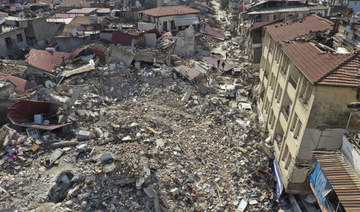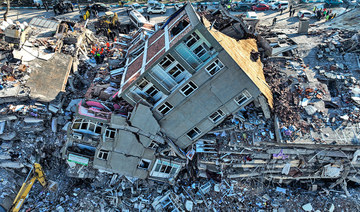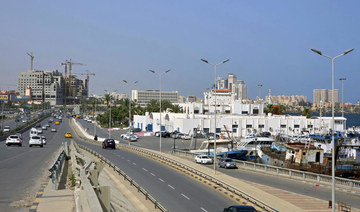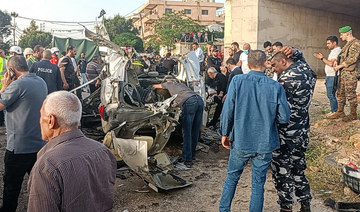ANKARA: Rescuers pulled more survivors from the rubble on Sunday, nearly a week after one of the worst earthquakes to hit Turkiye and Syria, as Turkish authorities sought to maintain order across the disaster zone and began legal action over building collapses.
With chances of finding more survivors growing more remote, the toll in both countries from Monday’s earthquake and major aftershocks rose above 33,000 and looked set to keep growing. It was the deadliest quake in Turkiye since 1939.
In a central district of one of the worst hit cities, Antakya in southern Turkiye, business owners emptied their shops on Sunday to prevent merchandise from being stolen by looters.
Residents and aid workers who came from other cities cited worsening security conditions, with widespread accounts of businesses and collapsed homes being robbed.
Facing questions over his response to the earthquake as he prepares for a national election that is expected to be the toughest of his two decades in power, President Tayyip Erdogan has said the government will deal firmly with looters.
In Syria, the disaster hit hardest in the rebel-held northwest, leaving homeless yet again many people who had already been displaced several times by a decade-old civil war. The region has received little aid compared to government-held areas.
“We have so far failed the people in north-west Syria,” United Nations aid chief Martin Griffiths tweeted from the Turkiye-Syria border, where only a single crossing is open for UN aid supplies.
“They rightly feel abandoned,” Griffiths said, adding that he was focused on addressing that swiftly.
More than six days after the first quake struck, emergency workers still found a handful of people clinging to life in the wreckage of homes that had become tombs for many thousands.
A team of Chinese rescuers and Turkish firefighters saved 54-year-old Syrian Malik Milandi after he survived 156 hours in the rubble in Antakya.
On the main road into the city the few buildings left standing had large cracks or caved-in facades. Traffic occasionally halted as rescuers called for silence to detect signs of remaining life under the ruins.
A father and daughter, a toddler and a 10-year-old girl were among other survivors pulled from the ruins of collapsed buildings Sunday, but such scenes were becoming rare as the number of dead climbed relentlessly.
At a funeral near Reyhanli, veiled women wailed and beat their chests as bodies were unloaded from lorries — some in closed wood coffins, others in uncovered coffins, and still others just wrapped in blankets.
Some residents sought to retrieve what they could from the destruction.
In Elbistan, epicenter of an aftershock almost as powerful as Monday’s initial 7.8 magnitude quake, 32-year-old mobile shop owner Mustafa Bahcivan said he had come into town almost daily since then. On Sunday he sifted through the rubble searching for any of his phones that might be still be intact and sellable.
“This used to be one of the busiest streets. Now it’s completely gone,” he said.
DETENTION ORDERS
Building quality in a country that lies on several seismic fault lines has come into sharp focus in the aftermath of the quake.
Turkish Vice President Fuat Oktay said 131 suspects had so far been identified as responsible for the collapse of some of the thousands of buildings flattened in the 10 affected provinces.
“We will follow this up meticulously until the necessary judicial process is concluded, especially for buildings that suffered heavy damage and buildings that caused deaths and injuries,” he said.
The earthquake hit as Erdogan faces presidential and parliamentary elections scheduled for June. Even before the disaster, his popularity had been falling due to soaring inflation and a slumping Turkish currency.
Some affected by the quake and opposition politicians have accused the government of slow and inadequate relief efforts early on, and critics have questioned why the army, which played a key role after a 1999 earthquake, was not brought in sooner.
Erdogan has acknowledged problems, such as the challenge of delivering aid despite damaged transport links, but said the situation had been brought under control.
SYRIA AID COMPLICATED BY YEARS OF WAR
In Syria, the hostilities that have fractured the country during 12 years of civil war are now hindering relief work.
Earthquake aid from government-held regions into territory controlled by hard-line opposition groups has been held up by approval issues with Islamist group Hayat Tahrir Al-Sham (HTS) which controls much of the region, a UN spokesperson said.
An HTS source in Idlib told Reuters the group would not allow any shipments from government-held areas and that aid would be coming in from Turkiye to the north.
The UN is hoping to ramp up cross-border operations by opening an additional two border points between Turkiye and opposition-held Syria for aid deliveries, spokesperson Jens Laerke said.
The foreign minister of US ally the United Arab Emirates met Syrian President Bashar Assad on Sunday in the first high-level visit by an Arab official since the quake.
Several Arab countries have provided support to Assad in the quake’s aftermath. Western countries, which sought to isolate Assad after his crackdown on protests in 2011 and the outbreak of civil war, are major contributors to UN relief efforts across Syria but have provided little direct aid to Damascus during the civil war.
The first shipment of European earthquake aid to government-held parts of Syria also arrived in Damascus on Sunday.
UN Syria envoy Geir Pedersen said in Damascus the United Nations was mobilizing funding to support Syria. “We’re trying to tell everyone: Put politics aside, this is a time to unite behind a common effort to support the Syrian people,” he said.
The quake ranks as the world’s sixth deadliest natural disaster this century, its death toll exceeding the 31,000 from a quake in neighboring Iran in 2003.
It has killed 29,605 people in Turkiye and more than 3,500 in Syria, where tolls have not been updated for two days.
Turkiye said about 80,000 people were in hospital, and more than 1 million in temporary shelters.
Quake death toll tops 33,000, Turkiye starts legal action against builders
https://arab.news/bcjy2
Quake death toll tops 33,000, Turkiye starts legal action against builders
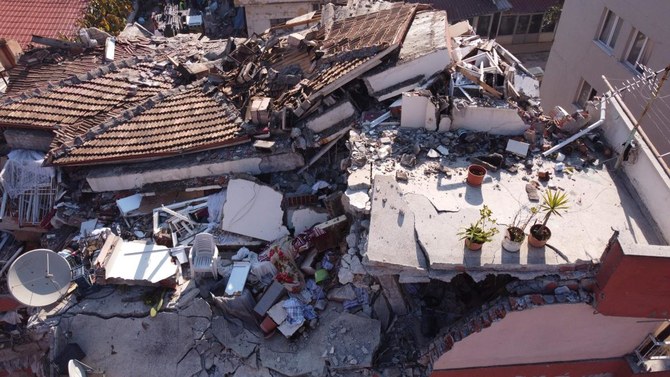
- UN relief chief Martin Griffiths: Chances of finding survivors dim with each passing day
Three Syrians missing after cargo ship sinks off Romania

- Eight sailors were rescued by one of the nearby commercial vessels, while the search for the other three, “all of Syrian nationality,” was continuing, the statement said
BUCHAREST: Romanian rescue teams on Saturday were scouring the Black Sea for three Syrian sailors who went missing when their cargo ship sank off the coast, the naval authority said.
The Mohammed Z sank with 11 crew on board, 26 nautical miles off the Romanian town of Sfantu Gheorghe in the Danube delta in the Black Sea on Saturday morning, officials said in a statement.
The ship sailing under the Tanzanian flag was carrying nine Syrian and two Egyptian nationals, it said.
After receiving an alert at “around 4:00am,” naval authorities and border police were dispatched, with two nearby commercial vessels also joining the search and rescue operation.
Eight sailors were rescued by one of the nearby commercial vessels, while the search for the other three, “all of Syrian nationality,” was continuing, the statement said.
The cause of the accident was unclear.
According to the specialist website Marine Traffic, the ship departed from the Turkish port of Mersin and was heading to the Romanian port of Sulina.
Since the start of Russia’s war in Ukraine, drifting sea mines have posed a constant threat for ships in the Black Sea, with countries bordering it doubling down on demining efforts.
Ensuring safe passage through the Black Sea has gained particular importance since Romania’s Danube ports became hubs for the transit of grain following the Russian blockade of Ukraine’s ports.
Iraq parliament fails to elect a speaker

- A coalition of three Sunni blocs backed Issawi, while Mashhadani, who served as Iraq’s first speaker following the adoption of the 2005 constitution, received the support of the former speaker Mohamed Al-Halbussi’s sizeable bloc
BAGHDAD: Iraq’s lawmakers failed to elect a speaker on Saturday as neither of the two main candidates secured a majority during a tense session of parliament.
It is the latest in a series of failed attempts to replace the former head of parliament who was dismissed in November, with political bickering and divisions between key Sunni parties derailing every attempt so far.
Saturday’s vote was the closest yet to selecting a new head of the 329-member parliament, with 311 lawmakers showing up for the session and the leading candidate falling just seven votes short.
The parliament’s media office announced that 137 lawmakers chose Mahmoud Al-Mashhadani, the oldest MP, while 158 picked Salem Al-Issawi.
However, candidates require at least 165 votes to win.
Many lawmakers did not return for a second attempt on Saturday, with local media sharing videos of a brief brawl between MPs and reporting that at least one of them was injured.
The parliament’s media office then announced that the session had been adjourned.
Iraq, a mosaic of different ethnic and religious groups, is governed by complex power-sharing arrangements.
The largely ceremonial role of president traditionally goes to a Kurd, that of prime minister to a Shiite, while the speaker of parliament is usually Sunni.
But parliament is dominated by a coalition of pro-Iran Shiite parties, reflecting the country’s largest religious group.
A coalition of three Sunni blocs backed Issawi, while Mashhadani, who served as Iraq’s first speaker following the adoption of the 2005 constitution, received the support of the former speaker Mohamed Al-Halbussi’s sizeable bloc.
The new speaker will replace Halbussi, the influential politician dismissed by Iraq’s top court in November last year after a lawmaker accused him of forging a resignation letter.
Halbussi had been the country’s highest-ranking Sunni official since he first became a speaker in 2018.
The new speaker’s stint will not last long with the general election due in 2025.
Libyan armed groups clash near capital Tripoli

- Libya is divided between the UN-recognized Tripoli-based government and a rival administration in the country’s east
TRIPOLI: Clashes between Libyan armed groups broke out on Friday night in the city of Zawiya, some 40 kilometers west of the capital Tripoli, a security official told AFP.
An official at the city’s security directorate told AFP the clashes were ongoing but “intermittent” on Saturday.
“The southern areas of the city of Zawiya have been witnessing clashes between armed groups since last night,” the official said.
Libya is still struggling to recover from years of war and chaos after the 2011 overthrow of longtime dictator Muammar Qaddafi.
On Saturday morning, schools in Zawiya were suspended as some roads leading to the city were shut down amid a “casual” exchange of fire between the groups, the official said.
Media reports said the fighting left casualties, but authorities in Tripoli have yet to confirm any.
The Tripoli-based health ministry said in a statement it was working to evacuate parts of the city and taking injured people to hospitals.
The Libyan Red Crescent said it had evacuated some families from areas affected by the fights.
Authorities have not disclosed the reasons behind the fight.
Videos shared since Friday night on social media, which AFP could not verify, showed armed men in SUVs firing heavily at other armed groups.
Other videos showed smoke rising from parts of the city.
Although relative calm has returned to the oil-rich country in the past few years, clashes periodically occur between its myriad armed groups.
Last month, clashes broke out in the capital Tripoli, sparking panic among locals who were celebrating the end of the Muslim fasting month of Ramadan.
In August 2023, Tripoli’s worst armed clashes in a year left 55 people dead when two powerful groups fought.
Libya is divided between the UN-recognized Tripoli-based government and a rival administration in the country’s east.
How women and girls in war-torn Gaza are coping with water, sanitation and hygiene collapse

- UN Women has described ongoing Israel offensive as a “war on women” with at least 10,000 female deaths since last October
- Deprived of access to adequate services, more than 1 million women and girls face daily challenges and serious health risks
LONDON: Deprived of adequate access to water, sanitation, and hygiene services, Palestinian women and girls in Gaza are bearing the brunt of the prolonged and deepening humanitarian emergency caused Israel’s ongoing military offensive.
With no resolution to the conflict between Israel and Hamas in sight, more than a million displaced women and girls in the embattled Palestinian enclave continue to endure daily challenges in increasingly dire conditions.
UN Women has described the Israeli military operation in Gaza, which began in the wake of the Oct. 7 Hamas-led attack on southern Israel, as a “war on women,” with at least 10,000 killed since the start of the conflict — among them more than 6,000 mothers.
Those figures, published in April, are now likely far higher as Israel expands its operation and bombing raids into eastern Rafah — Gaza’s southernmost city, now home to some 1.4 million displaced Palestinians.

According to UN figures, this latest operation has forced an estimated 150,000 Palestinians to flee central and northern Rafah.
While the biggest risk to women and girls in Gaza is injury or death under Israeli bombardment, “the unhygienic conditions and lack of water in Gaza are also having a very negative impact on women and girls’ health and dignity,” Fikr Shalltoot, the Gaza programs director at Medical Aid for Palestinians, told Arab News.
Israel denies deliberately targeting civilian infrastructure, accusing Hamas of using residential areas for cover.
As summer approaches, soaring temperatures worsen the spread of communicable diseases caused by a lack of hygiene facilities, water, and access to proper food. The heat itself is also a significant danger to children and the elderly.
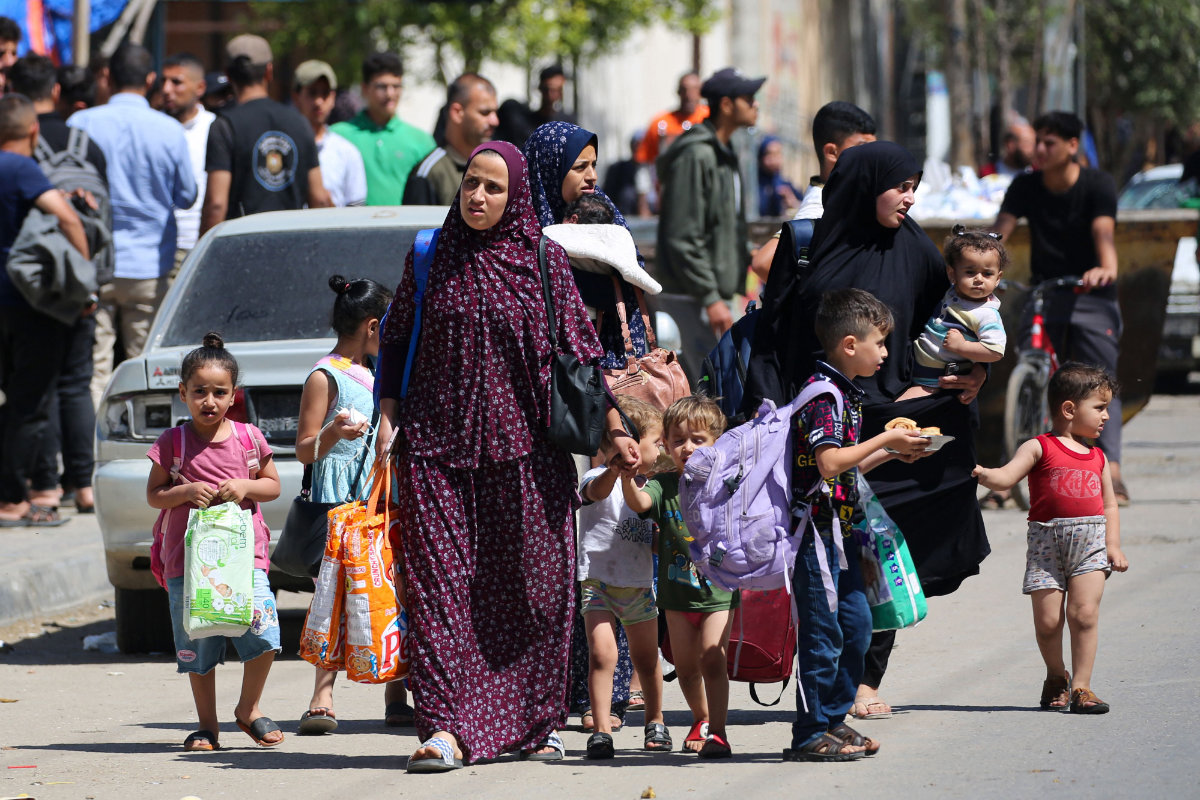
“During a recent heatwave, a 5-year-old girl tragically died in her tent due to extreme heat,” Shalltoot said.
Analysis of satellite imagery by BBC Verify found that the Israeli operation in Gaza has damaged or destroyed more than half (53 percent) of the territory’s vital water and sanitation facilities.
The analysis, based on images acquired in March and April, also confirmed that four of the six wastewater treatment plants in Gaza have been damaged or destroyed. These facilities were critical to preventing sewage buildup.
Fidaa Al-Araj, Oxfam’s food security, cash, and protection coordinator in Gaza, said the water, sanitation, and hygiene situation facing women and girls in the enclave was “challenging,” leaving them unable to access clean toilets or private shower spaces.
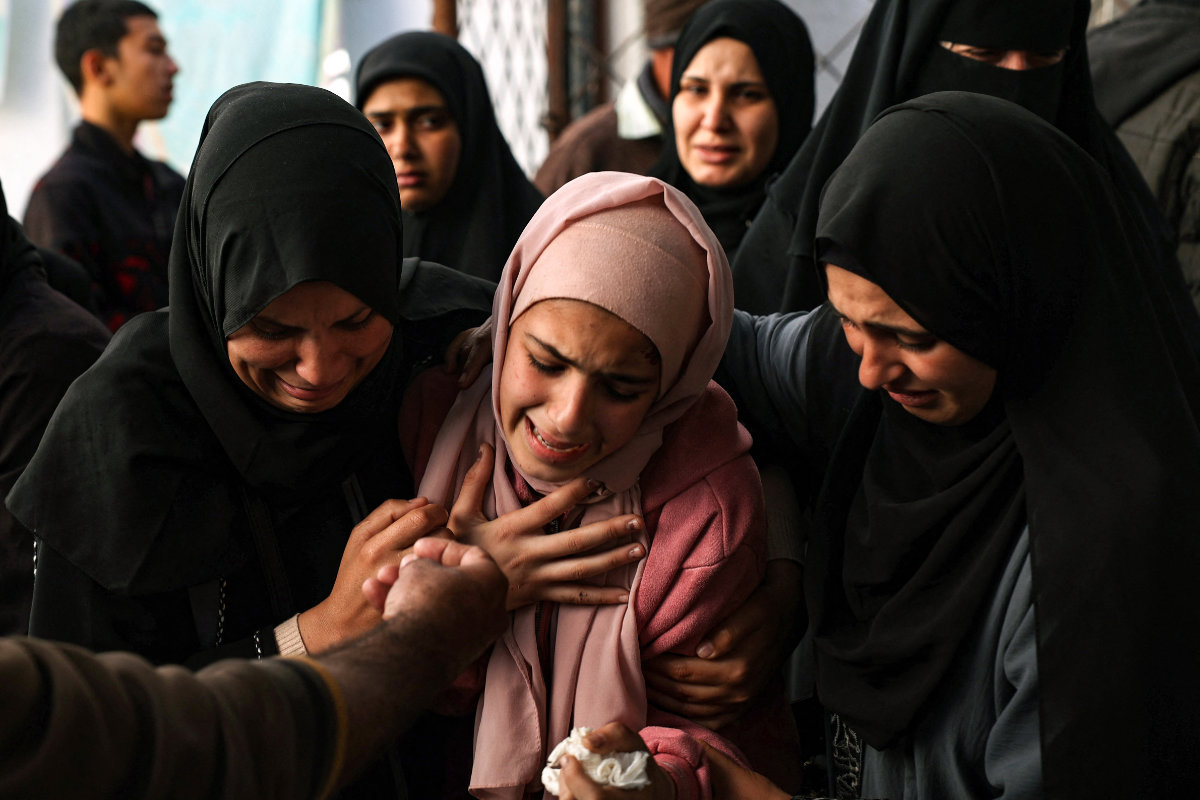
“Having been displaced into camps or even in a host community, the numbers of people, of internally displaced persons, are very, very high,” Al-Araj told Arab News. “So, there is (overcrowding), there are many difficulties in having access to toilets, bathrooms, showers.”
She added: “Even if you have the facilities, and even if by any stretch they are enough for the IDPs residing in any given space, there is the issue of lack of running water to supply those facilities and to have them up and running all the time.
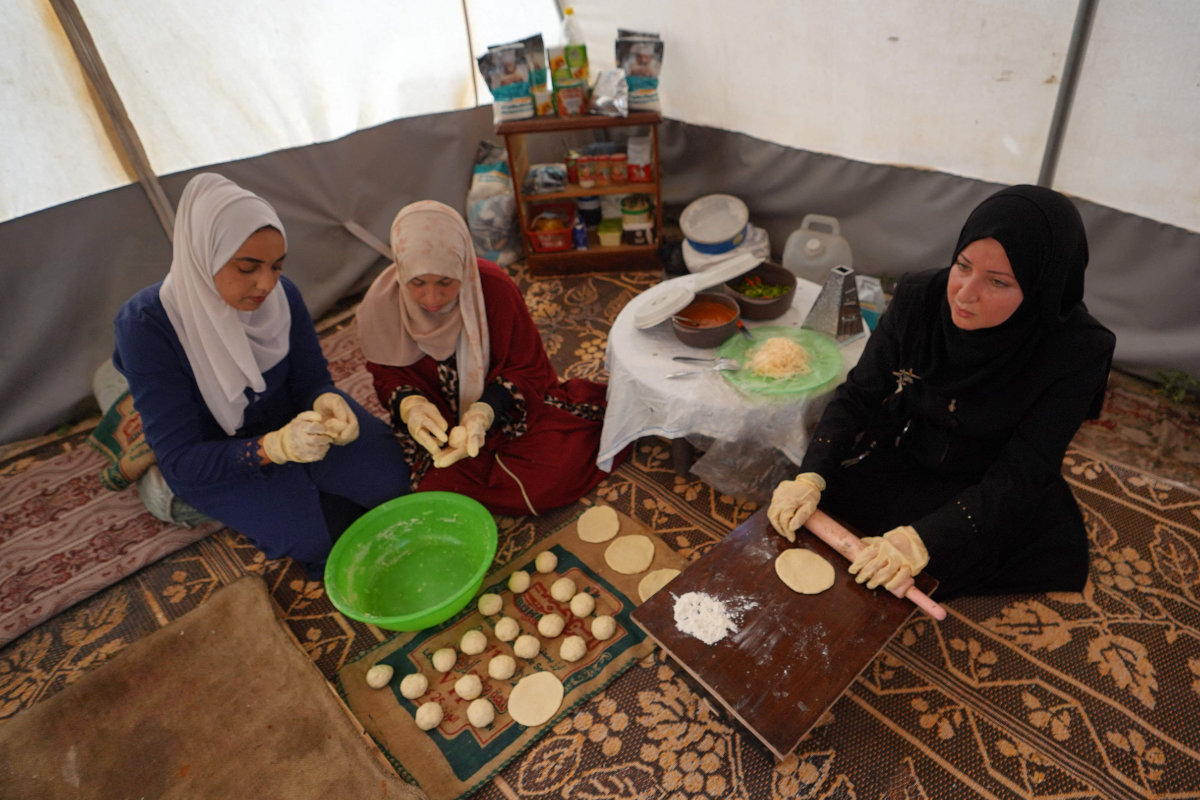
“So, the hygiene conditions are very compromised, to say the least. When it comes to women and girls, there are issues of privacy, which is completely lacking.”
Where washrooms are present, people have “to wait in line with all sorts of people, even strangers, men and women, just to use the toilet. You have people banging on the door of the toilet while you’re in there, asking you to hurry up because the line is still very long.”
INNUMBERS
• 700,000 Women and girls now hosted in Rafah who have nowhere else to go.
• 93% Women surveyed who feel unsafe in their own homes or in displacement.
• 6/10 Women who reported complications in pregnancy since Oct. 7.
Source: UN Women
This also makes management of menstruation especially challenging, as women and girls “endure longer hours without changing a pad, without washing,” Al-Araj added.
According to UN figures, there are more than 690,000 menstruating women and adolescent girls in the Gaza Strip. But aid agencies, which have had very limited access to the enclave due to the Israeli blockade, have been unable to meet the high demand for hygiene kits.
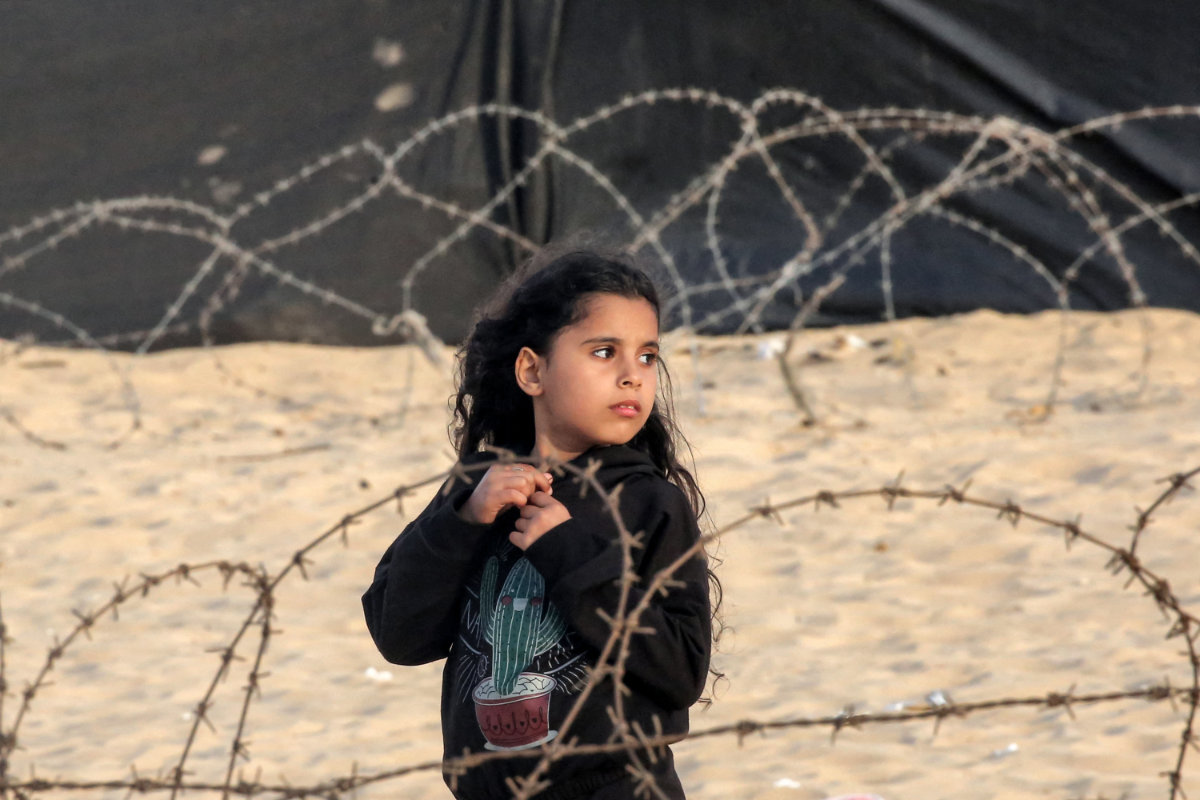
And since Israel took control of the Palestinian side of the Rafah border crossing on May 7 and closed the nearby Kerem Shalom crossing, the already limited flow of commercial goods and humanitarian aid has been further strangulated.
MAP’s Shalltoot confirmed that women’s sanitary products were “scarce in the local market,” highlighting that this has had “a psychological and physical health impact on women and girls.”
She said: “They resort to homemade, makeshift alternatives, which negatively impact their health by putting them at risk of reproductive and urinary tract infections and protection-related risks.
“This also negatively impacts their psychological well-being, anxiety and insecurity.”
Even the simple act of taking a shower has been almost impossible for women in Gaza for several months.
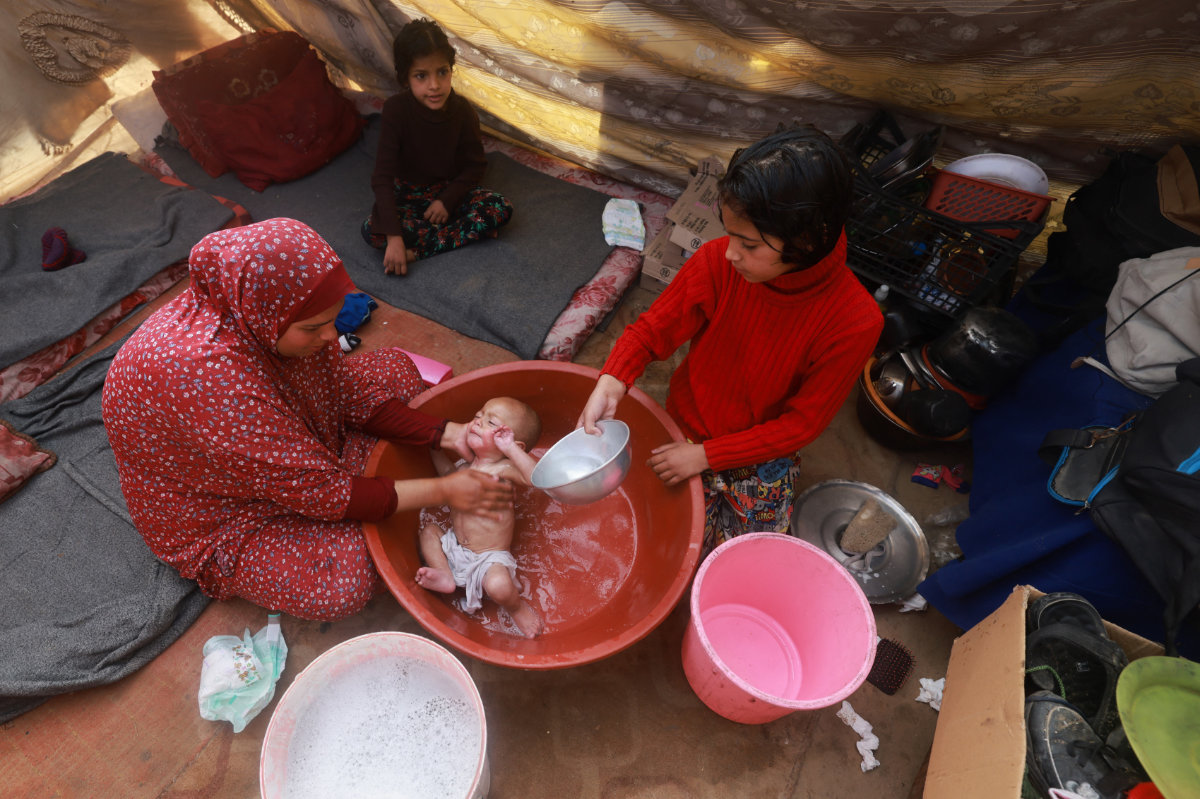
“It’s very difficult to find a spot designated to take showers, and if it’s there, it’s very difficult to have water,” Oxfam’s Al-Araj said. “And if the water is there, it’s very difficult to find time to take an adequate shower.”
She added: “As a woman and as a mother of girls, I’ve been through all of this. To overcome these circumstances, you space out the shower times, so you take a shower when it’s absolutely needed.
“Sometimes you could spend a couple of weeks or even more without taking a shower.”
The aid agency Medecins Sans Frontieres told the BBC that the destruction of water, sanitation and hygiene facilities has led to “disastrous health consequences for the population,” notably a significant rise in gastric complaints in Rafah.
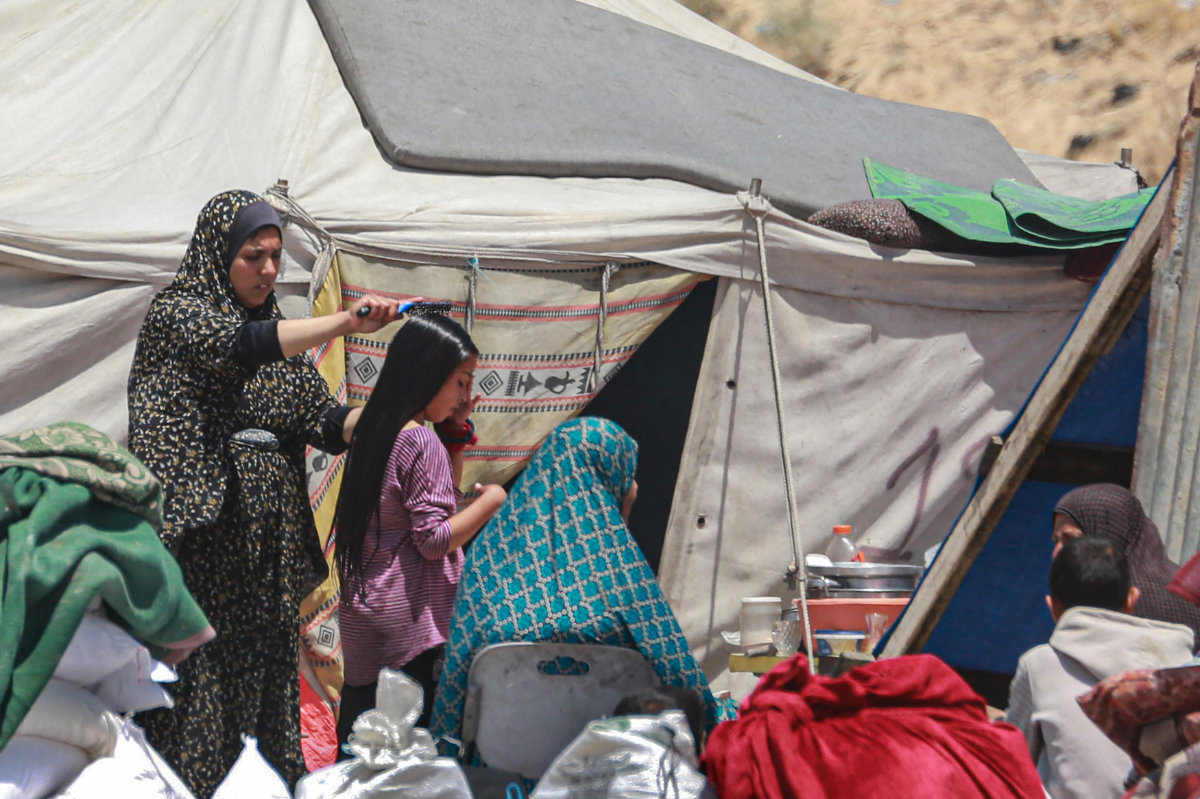
Contaminated water has also led to a spike in hepatitis A cases, with women and girls facing a heightened risk of exposure to the disease due to their traditional domestic responsibilities and caring for the sick, according to UN Women’s April gender alert report.
The report, titled “Scarcity and Fear,” highlighted that the lack of adequate and dignified facilities also exposes women and girls to reproductive and urinary tract infections.
“This situation could develop into dangerous or concerning health conditions for the women and girls, and I’m really sorry to say that it’s not given priority,” said Al-Araj.
“The heightening demand on the time, resources, and capacity of the medical facilities and staff makes prioritizing women’s issues or girls’ issues very difficult.”
Moreover, there are no quick fixes. Even if sufficient aid is permitted to enter Gaza, facilities need to be carefully planned in order to meet the necessary standards of privacy, cleanliness, and safety.
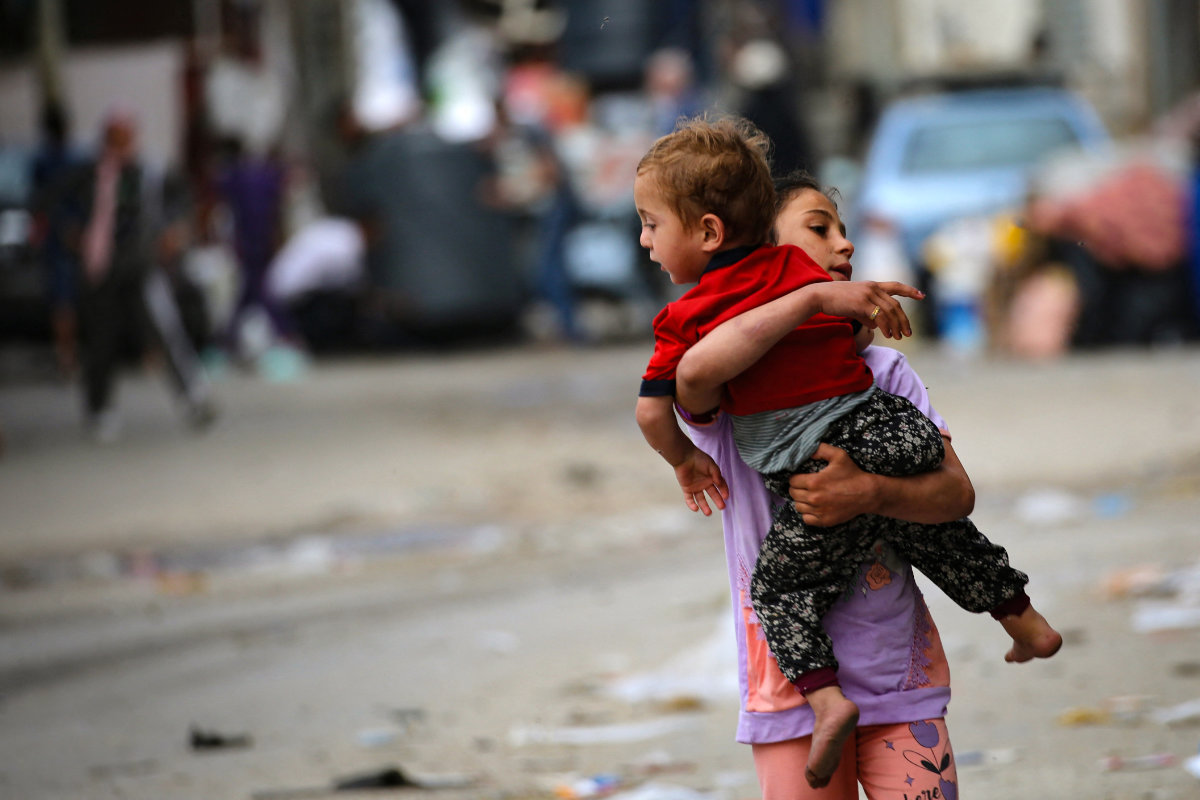
“It’s not enough to build a shower or a toilet,” said Al-Araj. “It’s not enough to provide it with water and that’s it. You have to think of the site … Is it safe for women and girls, is it accessible at all times … is it targeted maybe by different threats?
“You also have to think about the supplies. You don’t give a hygiene kit or a dignity kit once, for example, and that’s it, your work is done. You need to regularly provide those kinds of kits.”
Al-Araj also emphasized the need for “complementary services,” including extending responses “to enhancing access to sexual and reproductive health care system.
“I can only wish that the aftereffects of all of this wouldn’t linger for long or have irreversible results.”

Israeli army continues drone warfare against Hezbollah

- Hezbollah said in a statement that it targeted the Ras Naqoura naval site with artillery in response to the drone strike
BEIRUT: Israel widened its drone attacks on Hezbollah and Hamas fighters in Lebanon on Saturday, with strikes near the Lebanese-Syrian border in parallel with attacks in the south of the country.
An Israeli combat drone struck a car carrying two people on the road between the Lebanese General Security and Syrian General Security checkpoints.
The Syrian Observatory confirmed the attack, saying that “the target in the car was a Hezbollah leader and his companion.”
Footage taken by passersby on the border road showed the vehicle on fire, with flames and smoke rising from surrounding areas, suggesting that more than one missile struck the target.
Sham FM radio, which is close to the Syrian regime, later confirmed that an Israeli attack destroyed a car and killed both occupants near a military checkpoint on the Damascus-Beirut highway.
Unconfirmed media reports said the military vehicle belonged to Hezbollah.
Hezbollah later launched dozens of attacks on Israeli military sites.
According to a statement, these included surveillance equipment at the Ramtha site, “technical systems and spy equipment at the Raheb site,” the headquarters of the Liman Battalion, surveillance equipment at the Hadab Yarin site, and the Al-Samaqa site in the Kfarshuba hills.
The latest attack came less than 18 hours after an Israeli drone struck a car on the Majdal Anjar road, killing a senior Hamas figure.
Izz El-Deen Al-Qassam Brigades identified the victim as Sharhabeel Ali Al-Sayyid, a mujahid leader.
Another person accompanying Ali Al-Sayyid was badly injured in the strike.
Early on Saturday, an Israeli drone struck a motorcycle on the road to Naqoura town on Lebanon’s southern border, injuring the rider, a fisherman returning home from work.
The injured man was taken to hospital in Tyre.
Hezbollah said in a statement that it targeted the Ras Naqoura naval site with artillery in response to the drone strike.
Repeated Israeli attacks have added to tension in the southern and Bekaa areas, with traffic on the main roads noticeably reduced.
Hezbollah also targeted a group of Israeli soldiers near the Pranit Barracks with missiles, causing “a direct hit,” according to the statement.
Israeli fighter planes raided the town of Khiam at dawn on Saturday, continuing their assaults on Aita Al-Shaab.





